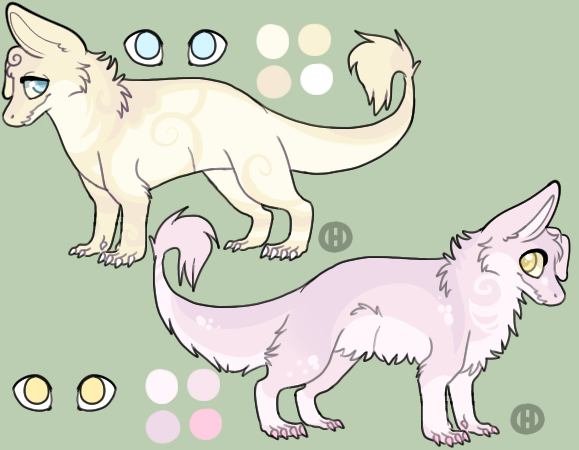Breeding Bottom
Are you considering breeding bottom but don't know where to start? Well, you've come to the right place. Breeding bottom can be a daunting task, but with the right information and resources, it can be a rewarding experience.
The Pain Points of Breeding Bottom
Before we dive into the details of breeding bottom, it's essential to understand the potential challenges associated with this process. From inconsistent breeding results to high costs and proper nutrition, there are several factors to consider.
The Target of Breeding Bottom
The purpose of breeding bottom is to produce offspring with desirable traits and characteristics. The goal is to maintain and improve the quality of the breed while also ensuring the health and well-being of the animals. Whether you're breeding for show or companionship, understanding the target of your breeding program is critical.
Summary of Main Points
In summary, breeding bottom requires careful planning and consideration of various factors, including genetics, nutrition, and breeding methods. The goal is to produce healthy offspring with desirable traits while maintaining the quality of the breed. Despite the potential challenges, with the right resources and information, breeding bottom can be a rewarding experience.
Breeding Bottom: Exploring the Target
When it comes to breeding bottom, understanding the target is crucial. The target of breeding bottom is to produce offspring with desirable traits, including temperament, appearance, and health. This process involves selecting breeding pairs based on their genetics and evaluating their offspring to determine which ones carry desirable traits.
For example, if you're breeding a specific breed of dog, you may want to breed dogs with specific coat colors or patterns. You may also want to focus on breeding dogs with specific temperaments or personalities. Breeding bottom involves a meticulous selection process to ensure that the offspring carry the desired traits.

The Importance of Nutrition in Breeding Bottom
Nutrition plays a vital role in the breeding process. Proper nutrition is essential for both the breeding pairs and their offspring. A well-balanced diet can help ensure that the animals stay healthy and produce healthy offspring.
It's critical to provide breeding pairs with a diet rich in protein, vitamins, and minerals. This will help ensure that the animals are healthy and that their offspring are born healthy and strong. It's also important to provide the animals with access to clean water at all times.

Breeding Methods in Breeding Bottom
When it comes to breeding bottom, there are several methods to consider. Some breeders use natural breeding methods, while others opt for artificial insemination. Natural breeding involves allowing the breeding pairs to mate naturally, while artificial insemination involves injecting the semen of the male into the female.
Both methods have their advantages and disadvantages. Natural breeding is less expensive and less invasive, but it can be less predictable. Artificial insemination, on the other hand, offers greater predictability and control, but it can be more expensive and invasive.

The Role of Genetics in Breeding Bottom
Genetics plays a critical role in breeding bottom. In order to produce offspring with desirable traits, breeders must carefully select breeding pairs based on their genetics. This involves evaluating the animals' pedigree and selecting pairs that are genetically compatible.
Breeders may also need to test for genetic diseases to ensure that the offspring are healthy. Genetic testing can help identify carriers of diseases and allow breeders to avoid breeding pairs that could produce offspring with health problems.

Q&A About Breeding Bottom
Q: What factors should I consider when selecting breeding pairs?
A: When selecting breeding pairs, consider their genetics, temperament, and health. Make sure that the animals are compatible and that they carry desirable traits.
Q: What is the cost of breeding bottom?
A: The cost of breeding bottom can vary depending on factors such as nutrition, veterinary care, and breeding methods.
Q: What is the best way to ensure that the offspring are healthy?
A: Providing breeding pairs with a well-balanced diet and access to clean water is essential. It's also important to test for genetic diseases and avoid breeding pairs that could produce offspring with health problems.
Q: What are the potential challenges associated with breeding bottom?
A: Common challenges include inconsistent breeding results, high costs, and the potential for health problems in the offspring.
Conclusion of Breeding Bottom
Breeding bottom can be a challenging but rewarding experience for animal breeders. With careful planning and consideration of various factors such as nutrition, genetics, and breeding methods, breeders can produce healthy offspring with desirable traits, maintaining the quality of the breed.
Gallery
Turned Gay By Monsters: Volume 10 (Monsters Made Me Gay) EBook : Wilder

Photo Credit by: bing.com /
Breeding - YouTube

Photo Credit by: bing.com /
Pandla JBD Breeding 018 - BOTTOM - Fidget By JBDMasterlist On DeviantArt

Photo Credit by: bing.com / fidget jbd breeding bottom
Seaview Predator Park – ‘A Breeding Factory For Trophy Hunters

Photo Credit by: bing.com / breeding seaview trophy hunters predator factory park wildlife surprise canned findings mercer hunting campaign department chris said against come who
In Pictures: Bifengxia Panda Breeding Centre | Environment | The Guardian

Photo Credit by: bing.com /
